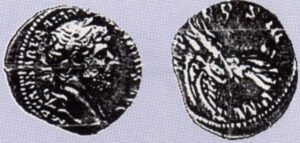
What sparked off my life-long interest in metal detecting I cannot remember exactly, but I’m sure it must have been something to do with my second love of reading – voraciously -anything to do with recovered objects from our past. It didn’t really matter whether the item was of any intrinsic value: the only criterion was how long it had remained in the ground before being discovered. I get a big kick out of researching anything I find, and imagining the sort of conditions that might have prevailed when the object was lost all those years ago, and the kind of person who might have owned it at the time.
It must have been around 1969 when I bought my first detector – a Magpie. The technology was very new in those early days and the results were appalling, although I wasn’t aware of this as I had nothing with which to compare specifications at the time. There were principally only the cumbersome wartime mine detectors, which were still doing the rounds as war surplus equipment.
I remember proudly taking my detector to my mother-in-law’s house in the country and trying my luck there. It was very difficult to identify any kind of signal, never mind a successful one, and it just about produced a signal when held a few inches away from the wing of my 1963 Austin Mini – which did not boost my confidence much (I might have found a horseshoe or two later on).
At the time it was also a legal requirement to apply for a Pipe Finder’s Licence at a cost of 75p for a period of five years. This was issued by the Ministry of Posts and Communications in accordance with the Wireless Telegraphy Act of 1949, and entitled the holder to determine the position of buried or concealed pipes, cables or other metal objects if he or she wished. The last such licence I bought was in 1974, and it is no longer necessary to have one.
As time went on I bought bigger and better detectors, which scanned deeper and analysed the nature of the metal found, so it isn’t often now that the detectorist has to go to the trouble and inconvenience of digging a base metal at all, unless there’s a particular need to do so, of course. There really are some magnificent detectors available nowadays, and I’d advise anyone starting this wonderful, healthy hobby to buy the best affordable, even if this means buying second-hand.
As the years rolled by I began to be consumed by the fact that my finds box did not contain one solitary Roman artefact, and this was most frustrating. I continued to search, but still the feel of Rome continued to elide me. Either I was looking in the wrong places, couldn’t get on to the right places or they had already been investigated, and to make matters worse the detecting magazines were full of Roman finds, although these were mostly in the South, I have to say.
Then one day my brother-in-law, who lives in Derbyshire, told me he’d got permission for me to look around a likely site on a farm near his home. I put it on the back burner waiting for a suitable occasion.
One fine May morning I sat drinking a cup of coffee, gazing reflectively around the site, and noted that it consisted of a very large field on the side of quite a steep hill overlooking a valley. “Just the sort of spot where a legionnaire would have set up his look-out post,” I thought. Without giving much real credence to the theory and despite knowing a bit about the lead mining in the locality. I decided to start my detecting right on the brow of the hill.
I couldn’t have been going for more than half an hour when I heard that pure little noise indicating a good signal, and extracted a neat little plug of earth some four inches deep. I looked down and there, right at the bottom of the hole, smiling sweetly back at me, was what I later found to be a silver denarius of Emperor Hadrian, dated circa 122-123AD, The coin was just as though it had been dropped yesterday, with no evidence at all of the black stain to which silver is prone when it lies buried for a long time. The inscription was clear, and there was no corrosion.
Although I went over the site very carefully several times afterwards, I could find no other Roman artefact, and I’ve often marvelled since how the fates had conspired to arrange for the coin to fall into the mud and lie there, waiting for me to pick it up almost two millennia later.
I’ve had one or two other Roman finds since, but nothing has compared to the joy of finding that first silver denarius, and I think the feeling will be with me for ever.
A. T. Houlston








